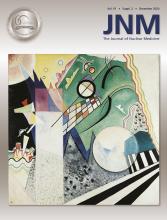The internal dosimetry of β- and γ-emitters has been established by several authors. Smith (1) cites the work of Loevinger et al. (2) and Ellet et al. (3), pioneers in the field. Somehow, internal dosimetry manages to intimidate many, when, as shown by Smith, it is just energy per unit mass, as is external dosimetry. The difficulty arises from the calculation of the absorbed fraction of energy from a source region to itself or to a different target. For particulate radiation, the energy per emission and its abundance are sufficient, as we assume that all energy emitted in a source is absorbed there (a generally good assumption), but for photons, more work is needed. Smith, like Marinelli, Quimby, and others (4,5), used reasonable approximations. In 1965, we did not have the elaborate Monte Carlo methods that were developed later by Cristy and Eckerman (6), among others. These approximations were wonderful at the time and were shown by more exact computer methods to be quite reasonable. All of the unit conversions were, of course, absolute. The “remainder of the body” method developed by Cloutier et al. (7) was not available, but notice the agreement between Smith’s final answers and those of the latest methods, using highly sophisticated anthropomorphic phantoms and the best kinetic data (Table 1).
99mTcO4 Injection (rad/mCi)
The major discrepancy is in the thyroid dose; Smith assumed some thyroid blocking. Smith was using a preliminary model that showed that the “male gonadal dose is identical to the total body absorbed dose” but that “the female gonadal absorbed dose is the same as the male gonadal absorbed dose except that a backscatter factor is introduced in calculating the gamma component of the absorbed dose.” He also did not consider the 0.5 factor for stomach wall dose to stomach contents dose (9). Nonetheless, this was an excellent paper using the available models and factors of the time.
DISCLOSURE
No potential conflict of interest relevant to this article was reported.
- © 2020 by the Society of Nuclear Medicine and Molecular Imaging.
REFERENCES
- Received for publication May 19, 2020.
- Accepted for publication May 20, 2020.







